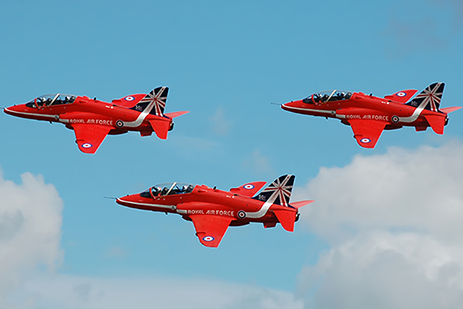
Six Benefits of FTI Ethernet Switches in Aircraft Testing
In the world of aircraft testing, reliable data is of paramount importance. The deployment of a new aircraft cannot move forward if it isn’t properly validated, and the only way to ensure reliable validation is by securing the data you need.
Yet, a false economy mentality can take hold, especially where it concerns testing equipment, like Ethernet switches. After all, Ethernet technology is widely adopted, standards are mainstream and Ethernet switches are ubiquitous. How different can a flight test instrumentation (FTI) Ethernet switch possibly be from a good quality, general-purpose Ethernet switch?
The answer, as many have learned the hard way, is significantly different.
Aerospace testing takes place in harsh environments that can include wild variations in temperature, humidity, altitude, moisture and pressure, to name just a few. Additionally, the technical and data requirements necessary for advanced aerospace testing often require equipment that can deliver precise measurements, at sub-millisecond rates, without significant lag.
Because aerospace testing conditions are inherently extreme, equipment also needs to be able to come back online quickly in the event of a power brownout or voltage surge. Any sort of reboot delay will result in lost data.
The Design Difference
A reliable, proven flight test instrumentation Ethernet switch designed for aviation testing from the ground up looks much different than a general-purpose Ethernet switch. Considerations that should be kept in mind include
- Time stamping: Aerospace testing requires precise time measurements so that analysts can ascertain what pilot inputs or exterior factors impacted an aircraft’s performance during testing. If an Ethernet switch can’t support precise and accurate time stamping using time-sources found onboard an aircraft (and many general-purpose switches can’t), the data collected is difficult or impossible to analyze.
- Robustness: Experimental aircraft are flown at the extreme edges of their performance envelopes. As a matter of course, this type of flight results in heavy turbulence, extreme cold and vibration. FTI Ethernet switches are built to withstand these conditions. Some, like those from Curtiss-Wright, can even be installed without mounting blocks, which means they are both rugged enough to withstand turbulence and shock, and they can be installed almost anywhere inside the aircraft.
- 1588v1 or 1588v2: Aircraft testing sensors are undergoing a shift from older IEEE 1588v1 domains to IEEE 1588v2 domains – often called the Precision Time Protocol (PTP). However, general-purpose Ethernet switches are not designed to be backwards compatible, which means testing options are limited. Curtiss-Wright FTI Ethernet switches support both PTP v1 and PTP v2 and can translate time between the two standards.
- Startup: Electrical brownouts and surges are a fact of life in aircraft testing, unlike in the world of standard computing, where most general-purpose Ethernet switches are deployed. This means that when a general-purpose switch is used in aerospace testing, there is a MAC address dynamic learning time delay when the switch powers back on after a reboot. The latest FTI switches from Curtiss-Wright, by contrast, use FPGA finite-state machines that are live at power-up, which means there is virtually no delay after a power loss.
- Real-time monitoring and filtering: Due to their architecture, general-purpose switches can’t always support real-time monitoring or filter data by payload type. By contrast, Curtiss-Wright FTI Ethernet switches incorporate Xbar architecture that facilitates flexible forwarding and in-depth configurable filtering that can send specific data to multiple destinations for real-time monitoring, recording and telemetering.
- Connections: General-purpose Ethernet switches are not built with military connection ports and must be altered to accommodate those connections. All Curtiss-Wright switches do incorporate military connections.
Like almost everything, a larger, up-front investment often yields both time and monetary savings over the long term.